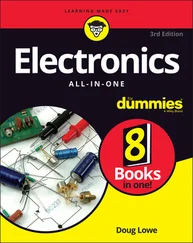Take the case of a $1,000 cash sale. By using Pacioli’s system or by using double-entry bookkeeping, you can record this transaction as shown here:
| Cash |
$1,000 |
Debit |
| Sales revenue |
$1,000 |
Credit |
See how that works? The $1,000 cash sale appears as both a debit to cash (which means an increase in cash) and a $1,000 credit to sales (which means a $1,000 increase in sales revenue). Debits equal credits, and that’s no accident. The accounting model and Pacioli’s assignment of debits and credits mean that any correctly recorded transaction balances. For a correctly recorded transaction, the transaction’s debits equal the transaction’s credits.
Although you can show transactions as I’ve just shown the $1,000 cash sale, you and I may just as well use the more orthodox nomenclature. By convention, accountants and bookkeepers show transactions, or what accountants and bookkeepers call journal entries, like the one shown in Table 2-4.
TABLE 2-4Journal Entry 1: Recording the Cash Sale
| Account |
Debit |
Credit |
| Cash |
$1,000 |
|
| Sales revenue |
|
$1,000 |
See how that works? Each account that’s affected by a transaction appears on a separate line. Debits appear in the left column. Credits appear in the right column.
 You actually already understand how this account business works. You have a checkbook. You use it to keep track of both the balance in your checking account and the transactions that change the checking account balance. The rules of double-entry bookkeeping essentially say that you’re going to use a similar record-keeping system not only for your cash account, but also for every other account you need to prepare your financial statements.
You actually already understand how this account business works. You have a checkbook. You use it to keep track of both the balance in your checking account and the transactions that change the checking account balance. The rules of double-entry bookkeeping essentially say that you’re going to use a similar record-keeping system not only for your cash account, but also for every other account you need to prepare your financial statements.
Here are a couple of other examples of how this transaction recording works. In the first part of this discussion of how double-entry bookkeeping works, I describe two other transactions: purchasing $1,000 of inventory for cash and spending $1,000 in cash on advertising. Table 2-5shows how the purchase of $1,000 of inventory for cash appears. Table 2-6shows how spending $1,000 of cash on advertising appears.
TABLE 2-5Journal Entry 2: Recording the Inventory Purchase
| Account |
Debit |
Credit |
| Inventory |
$1,000 |
|
| Cash |
|
$1,000 |
TABLE 2-6Journal Entry 3: Recording the Advertising Expense
| Account |
Debit |
Credit |
| Advertising |
$1,000 |
|
| Cash |
|
$1,000 |
By tallying the debits and credits to an account, you can calculate the account balance. Suppose that before Journal Entries 1, 2, and 3, the cash balance equals $2,000. Journal Entry 1 increases cash by $1,000 (the debit). Journal Entries 2 and 3 decrease cash by $1,000 each (the $2,000 credits). If you combine all these entries, you get the new account balance. The following formula shows the calculation:
| Beginning balance of cash |
$2,000 |
| Plus cash debit from Journal Entry 1 |
$1,000 |
| Minus cash credit from Journal Entry 2 |
–$1,000 |
| Minus cash credit from Journal Entry 3 |
–$1,000 |
| Ending cash balance |
$1,000 |
When I learned about double-entry bookkeeping, I stumbled over the terms debit and credit. The way I’d heard the terms used before didn’t agree with the way that double-entry bookkeeping seemed to describe them. This conflict caused a certain amount of confusion for me. Because I don’t want you to suffer the same fate, let me quickly describe my initial confusion.
If you look at Table 2-3, you see that an increase in an asset account is a debit, and a decrease in an asset account is a credit. This means that in the case of your cash account, increases to cash are debits and decreases to cash are credits.
At some time, however, you’ve undoubtedly talked to the bank and heard someone refer to crediting your bank account — which meant increasing the account balance. And perhaps that someone talked about debiting your account — which meant decreasing the account balance. So what’s up with that? Am I wrong, and is the bank right?
Actually, both the bank and I are right. Here’s why. The bank is talking about debiting and crediting — not a cash account and not an asset account, but a liability account. To the bank, the money that you’ve placed in the account isn’t cash (an asset) but a liability (money that the bank owes you). If you look at Table 2-3, you see that increases in a liability are credit amounts and decreases in a liability are debit amounts. Therefore, from the bank’s perspective, when the bank increases the balance in your account, that increase is a credit.
Your assets may represent another firm’s liabilities. Your liabilities will represent another firm’s assets. Therefore, whenever you hear some other business talking about crediting or debiting your account, what you do is exactly the opposite. If the business credits, you debit. If the business debits, you credit.
Do you see how that works? You start with $2,000 as the cash account balance. The first cash debit of $1,000 increases the cash balance to $3,000, and then the cash credit of $1,000 in Journal Entry 2 decreases the cash balance to $2,000. Finally, the cash credit of $1,000 in Journal Entry 3 decreases the cash balance to $1,000.
You can calculate the account balance for any account by taking the starting account balance and then adding the debits and credits that have occurred since then. By hand, this arithmetic is a little unwieldy. Your computer (with the help of QuickBooks) does this math easily.
Almost a Real-Life Example
To cement the concepts that I talk about in the preceding paragraphs of this chapter, I want to quickly step through the journal entries, or bookkeeping transactions, that you’d record in the case of the hot dog stand discussed in Book 1, Chapter 1. To start, you need to know that the balance sheet shown in Table 2-2is the balance sheet at the start of the day, which means that the account balances in all the accounts appear as shown in Table 2-7. This list of account balances is called a trial balance. It shows the debit or credit balance for each account.
TABLE 2-7A Trial Balance at the Start of the Day
| Account |
Debit |
Credit |
| Cash |
$1,000 |
|
| Inventory |
3,000 |
|
| Accounts payable |
|
$2,000 |
| Loan payable |
|
1,000 |
| S. Nelson, capital |
_____ |
1,000 |
| Totals |
$4,000 |
$4,000 |
 I’m assuming that no year-to-date revenue or expenses exist yet for the hot dog stand. In other words, the operation is at a starting period.
I’m assuming that no year-to-date revenue or expenses exist yet for the hot dog stand. In other words, the operation is at a starting period.
 You may want to take a quick peek at Table 2-1, shown earlier. It summarizes the business activities of the hot dog stand. The journal entries that follow show how the information necessary for this statement would be recorded.
You may want to take a quick peek at Table 2-1, shown earlier. It summarizes the business activities of the hot dog stand. The journal entries that follow show how the information necessary for this statement would be recorded.
Читать дальше

 You actually already understand how this account business works. You have a checkbook. You use it to keep track of both the balance in your checking account and the transactions that change the checking account balance. The rules of double-entry bookkeeping essentially say that you’re going to use a similar record-keeping system not only for your cash account, but also for every other account you need to prepare your financial statements.
You actually already understand how this account business works. You have a checkbook. You use it to keep track of both the balance in your checking account and the transactions that change the checking account balance. The rules of double-entry bookkeeping essentially say that you’re going to use a similar record-keeping system not only for your cash account, but also for every other account you need to prepare your financial statements. I’m assuming that no year-to-date revenue or expenses exist yet for the hot dog stand. In other words, the operation is at a starting period.
I’m assuming that no year-to-date revenue or expenses exist yet for the hot dog stand. In other words, the operation is at a starting period.










